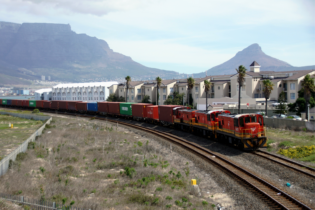Although not on the same playing field as the emerging economies of Brazil, China and India, which continue to boom in terms of market potential; Africa has been earmarked by industry experts as a region to watch closely following strong performances from South Africa, Morocco and Ethiopia last year.
The global demand for the continent’s huge pool of natural resources continues to escalate, leading to interest from the international logistics sector keen to snare a piece of the action. While much of the continent has long been beset with political instability and corruption, the African markets have been increasingly showing positive signs for investors, and consequently for the logistics industry. The 2012 Agility Emerging Markets Logistics Index shows both the Middle East and Africa amongst the fastest-growing ocean trade lanes in 2005-2011. Africa also featured some of the fastest growing air freight trade lanes and had the likes of Nigeria, Kenya, Morocco and Tunisia listed in the top ten fastest-growing exporters. Global logistics leader Barloworld’s 2012 Supply Chain Foresight report has similarly noted great potential for the continent as an emerging logistics market. “With the fast growth of GDP in some regions and with relatively low intra-trade taking place within Africa, demand for cargo services across most industry sectors looks set to increase over the next five years,” predicts Frank Courtney, chief executive for Barloworld Logistics, Europe, Middle East and Africa. “African economies are undoubtedly growing economies and the range of cargo required is wide.”
Although Barloworld offers a diverse range of supply chain management solutions across many different global trade routes, the company’s presence in Africa remains predominantly in its birthplace of South Africa. With the expansion of emerging market economies such as China, India, Russia and some African countries, trade between Africa and the Middle East is expected to flourish as the latter is perfectly placed as a central transhipment hub.
“The Middle East is a well-positioned distribution hub for Africa. GCC countries with their state-of-the-art facilities, free zones, open sky policies, mega terminal ports and airports, easy customs procedures and simple taxation policies also make it easy to establish trade links here,” says Courtney. “With China being Africa’s largest trade partner, the Middle East is well positioned to leverage off this trade flow. Much of the cargo flow driving this demand is made up of the natural resources needed to fuel these growing global economies, coming from Africa’s traditional industries of mining, oil and gas, chemicals and agriculture.
“Middle Eastern economies are also fuelling their manufacturing sectors, which will require African resources,” says Courtney. “So the trade between these two regions is expected to grow even further.”
Within the African trade zones; South Africa, Angola, Nigeria, Kenya and Egypt represent the largest trading economies, although Courtney expects this list to rapidly widen to include the up and coming countries of Namibia, Mozambique, Tanzania and Ethiopia. With this much potential on the African horizon, it is understandable why the Middle East’s cargo operators could be tempted to dive straight into this budding market.







